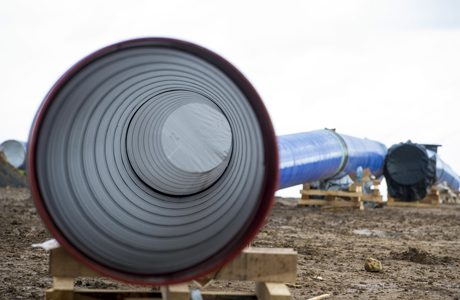
Scottish Water has made a £11.3m investment in its water infrastructure in parts of Inverclyde and Renfrewshire. It is a move that is intended to deliver clearer, fresher drinking water to about 11,000 customers in Port Glasgow and parts of Greenock and about 7000 customers in the Kilmacolm and Lochwinnoch areas.
The project, which will be carried out for Scottish Water by its alliance partners Caledonia Water Alliance (CWA), will involve the installation of about seven miles of new water mains between Greenock WTW and customers in these areas. It will require some road traffic management but Scottish Water and CWA say they “will do everything possible to minimise any disruption”.
The installation of the new mains will enable Scottish Water to change the customers’ source of supply to Greenock Water Treatment Works (WTW) from the Kaim WTW, which currently serves the Kilmacolm and Lochwinnoch areas, and the Dougliehill WTW, which serves Port Glasgow and small parts of Greenock.
The Kaim and Dougliehill WTWs, and customers in their supply zones, have experienced water quality issues in the past.
Scottish Water’s investment will enable the utility to decommission those two WTWs and provide water from Greenock WTW, which is currently operating below capacity.
CWA will install about 3.5 miles of new water main from the Whinhill Service Reservoir in Greenock to Dougliehill Service Reservoir.
A new pumping station will be constructed at Whinhill Service Reservoir to pump water from there to Dougliehill Service Reservoir.
Scottish Water will also install another 3.5 miles of water mains from Dougliehill reservoir to Kilmacolm, which will tie in to the existing water mains in the village.
In addition, the contractors will carry out work to reverse water flows from Dougliehill service reservoir back through Kilmacolm into Lochwinnoch, to be supplied with water from Greenock WTW.
The work will also include the construction of a booster pumping station at Burnbrae near Quarrier’s Village.
The Kaim and Dougliehill WTWs in Lochwinnoch and Port Glasgow will be decommissioned.
At the moment, Greenock WTW supplies about 70,000 customers in much of Inverclyde, including most of the population of Greenock and customers in Gourock, Wemyss Bay, Largs, Millport and Skelmorlie.
However, the WTW is running well below its capacity and is able to supply customers currently in the Kaim and Dougliehill WTW supply zones.
Mrs Joanna Peebles, Scottish Water’s regional communities manager for the area, said: “We are committed to improving our services to customers across Scotland and this project is a good example of that.
“Some customers served by the Kaim and Dougliehill water treatment works have occasionally experienced issues with the water quality. Our investment in ‘maining out’ to these supply zones from Greenock WTW, and taking Kaim and Dougliehill WTWs out of our supply network, will help ensure a supply of clear, fresh drinking water to these 18,000 customers for years to come.”
There will be some road traffic management required during the project, which is expected to be completed in late 2017 or early 2018, and disruption to supply to some customers.
This will include the use of three-way temporary traffic lights in Glenbrae Road and Kilmacolm Road, Greenock from 29 November for a total of 12 weeks with a two-week break from 23 December until 9 January.
Separate road traffic management in Kilmacolm Road, Greenock will also start from November 29 for a total of 20 weeks, again with a two-week break from 23 December until 9 January. This will involve temporary traffic lights in operation from near Knocknairshill Cemetery moving in 300-metre stretches towards Dougliehill WTW.
There might also be a requirement for localised road closures to allow construction work to proceed safely. All road traffic management will be implemented in liaison with the roads authority. Any diversion routes will be sign-posted.
Details of other road traffic management and planned interruptions to normal water supply will be provided to affected customers in advance.
The installation of the new pipe will be done mainly in fields and verges to avoid working on roads wherever possible.
Mrs Peebles added: “We made every effort to reduce any adverse impact on customers and road users when planning the project. Road traffic management will be arranged in liaison with the roads authorities.
“We thank affected customers and road users in advance for their patience and understanding and can assure them that any short-term inconvenience will be far out-weighed by the long-term benefits our investment will deliver to thousands of people.”






